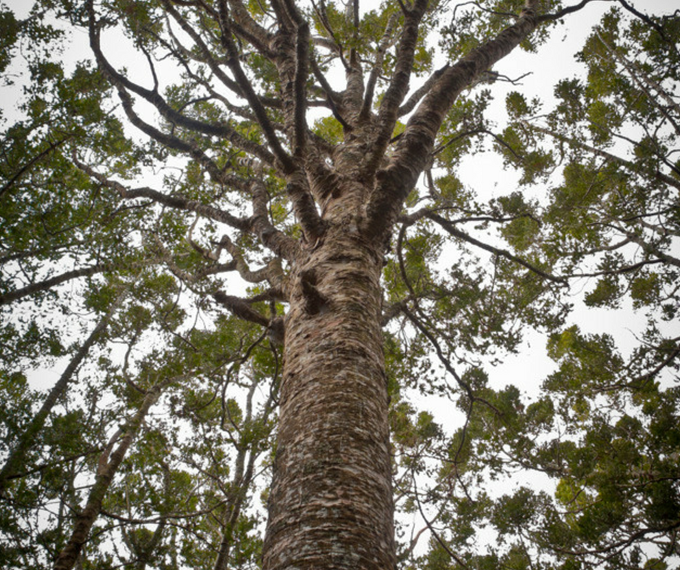Updated 22 November
What is happening with the Waitākere Ranges and Hunua Ranges regional park closures?
On 1 May, the forested areas of the Waitākere Ranges Regional Park, and 10 higher-risk tracks in the Hunua Ranges Regional Park, were closed to protect trees from kauri dieback disease and prevent its spread.
The Ministry for Primary Industries also issued Controlled Area Notices (CANs) that apply across the currently open tracks within the forested area of the Waitākere Ranges Regional Park and the whole of the native forested area of the Hunua Ranges regional parkland.
More information including lists of closed and open tracks and maps of the ranges
What will I see in the parks?
Aucklanders will see signage and barriers on tracks and compliance officers monitoring the closed and controlled (open) areas in both parks.
Are any tracks in the Waitākere Ranges still open?
Yes. There are some tracks still open. These tracks are either:
- outside the closed forested area
- inside the forested area, but are open because they meet the standard of a Controlled Area Notice
- in an area away from kauri.
When visiting open tracks in the forested area, you must follow the requirements of the Controlled Area Notice.
When visiting open tracks, you must comply with the Controlled Area Notice, a legal measure requiring people not take any soil into, or out of, the park and making the use of hygiene stations mandatory.
What is a Controlled Area Notice and how do I comply with it?
A CAN is an enforceable mechanism under the Biosecurity Act that controls the movement of materials that may cause a biosecurity risk, in this instance visible soil.
To follow the CANs in the Waitākere and Hunua ranges you must:
- use hygiene stations whenever you pass them to clean and disinfect all footwear and equipment.
You must not:
- carry visible soil into the Controlled Area (including on footwear and equipment and companion animals).
The CAN in place in the Waitākere Ranges also makes it an offence to carry visible soil out of the Controlled Area, as the disease is already established there, and soil moved from the ranges could be infected with the disease, resulting in further spread of the disease.
What about the rāhui over the Waitākere Ranges?
The rāhui over the Waitākere Ranges remains in place. The closed area is included within the rāhui, or cultural prohibition, placed by mana whenua Te Kawerau a Maki over the wider Waitākere Ranges Heritage Area in December 2017.
Auckland Council has worked closely with Te Kawerau a Maki on the closed area and the exceptions for tracks to be kept open.
Will other tracks in the Waitākere Ranges open in the future?
Yes. Auckland Council has been working closely with the Department of Conservation and Te Kawerau a Maki to confirm the approach needed to bring tracks in the Waitākere Ranges to a standard where they meet national best practice for kauri and support broader forest health.
Last week, following a blessing from Te Kawerau a Maki, work began on the popular Kitekite tracks to bring them to the agreed standard, and, provided we aren’t held up by weather delays, this work should be completed and the tracks re-opened before Christmas.
We expect to be able to open other tracks this summer, once upgrade work is completed. We are looking forward to sharing these improvements with you as soon as possible.
We’re also currently working on a track re-opening plan for the Waitākere Ranges Regional Park which identifies the tracks that will be the focus for improvement work and re-opening over the next couple of years. We are planning to take this out to park users and local communities in December and will have a range of ways that feedback can be provided through to the end of February.
Can I visit the Hunua Ranges Regional Park?
You can visit all areas of the Hunua Ranges Regional Park except for the 10 tracks that have now been closed.
A Controlled Area Notice has been placed across the native forest area of the park and adjoining Department of Conservation-administered lands. The requirements of the CAN in these areas are the same as those above.
How will I know which tracks are open?
Closed areas are marked with signage and barriers where necessary. Open tracks are marked with Controlled Area Notice signage and all open tracks will be equipped with hygiene stations.
The list of closed and open tracks will be updated regularly.
The Auckland Council website will be updated regularly with the status of tracks and with maps.
Arataki Visitor Centre is open, and has more information about kauri dieback disease, and places you can visit in the Waitākere Ranges.
What are the penalties for breaching a Controlled Area Notice?
If you do not meet the required hygiene standards on open tracks you can be prosecuted under the Biosecurity Act for breaching the Controlled Area Notice.
Compliance officers will begin to monitor use of hygiene stations at entrances and exits to ensure people meet the requirements of the Controlled Area Notices.
If you are found in closed areas, you could be issued with a trespass notice. If you ignore the trespass notice you could be issued with a fine.
Are there any other tracks closed because of KDB across the region?
Yes - earlier this year, kauri dieback was found at Kauri Park on Auckland's north shore, prompting closure of the nearby tracks and reserves in the Kaipatiki area.
We have also recently closed some vulnerable tracks on Waiheke Island, and in Clevedon.
Find out more
More information about kauri dieback disease
Updated lists of open and closed tracks will be posted and updated on the Auckland Council website.


